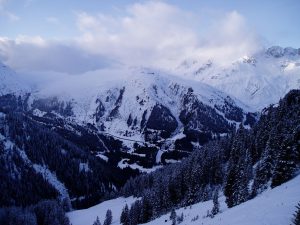A Closer Look At Recreation Tourism
March 17, 2019

Recreation tourism is a relatively new concept that is growing more popular with each season. “Tourism” generally refers to the industry dedicated to educating and entertaining visitors to a particular area. “Recreation” can refer to physical activities, but also to intellectual or cultural activities. Here we’ll take a deeper look into what recreation tourism actually is and what it looks like on a practical level.
Adventure Tourism
Adventure Tourism is a type of recreation tourism centered around one or two big adventures. For some, this might be going on a 14-day guided backpacking trip through the Swiss Alps or even a kayaking trip down the river. Adventure tourism embraces at least two of the following three elements: natural environment, physical activity, and immersion in the local culture. Hiking, rock-climbing, and snorkeling are examples of adventure tourism. It is sometimes also referred to as nature-based tourism, but its real goal is to have you experience an adventure of a lifetime.

Land-Based Recreation Tourism
Recreation tourism takes advantage of the many activities that can be enjoyed on land. This includes hiking, rock-climbing, skiing, snowshoeing, backpacking, guided hunting, mountain biking and more. There are many companies that now advertise these particular adventures as part of your overall vacation package, where your meals and lodging are all meant to incorporate and emphasize the grand adventure that you’re on.
Water-Based Recreation Tourism
This type of recreational tourism will include adventures such as white-water rafting, kayaking, snorkeling, scuba diving, fishing, and more. If you make this a central part of your vacation, it’s important to be comfortable in the water and know how to swim. If you think you might want to take a trip that revolves around scuba-diving, for example, it’s also a good idea to make yourself familiar with the equipment beforehand.

Cultural Tourism
Another way to experience recreation tourism is through cultural experiences. This means more than just visiting a museum (although that can be part of it). Recreational cultural tourism includes a hands-on component that immerses you in the culture you are experiencing. For example, a guided hike that takes you through old pioneer settlements and includes an interactive component, such as building your own fire, catching your own fish, sewing your own clothes, etc. would be considered cultural recreation tourism. Another example would be a reenactment of a war battle in which you get to either watch or take part in the reenactment and actually put your feet on the battlefield.
Concerns
Because recreation tourism is so dependent on nature, it is critical to be mindful of the environment when you offer or partake in this type of tourism. Leaving trash behind, intentionally or unintentionally removing something from nature (whether it’s a rock, plant, or something else), walking on protecting areas, and other human activities can negatively impact the environment. It’s important to be mindful of this and make an overt effort to leave no trace behind.
Recreation tourism is a budding industry and one that generations will continue to be interested in. There are so many companies out there taking advantage of this trend that it will be easy to incorporate into your next vacation, whether it’s by yourself, with a friend, or with your family. There are even plenty of options that are kid-friendly and will give your children an increased appreciation for nature and for other peoples and places.
